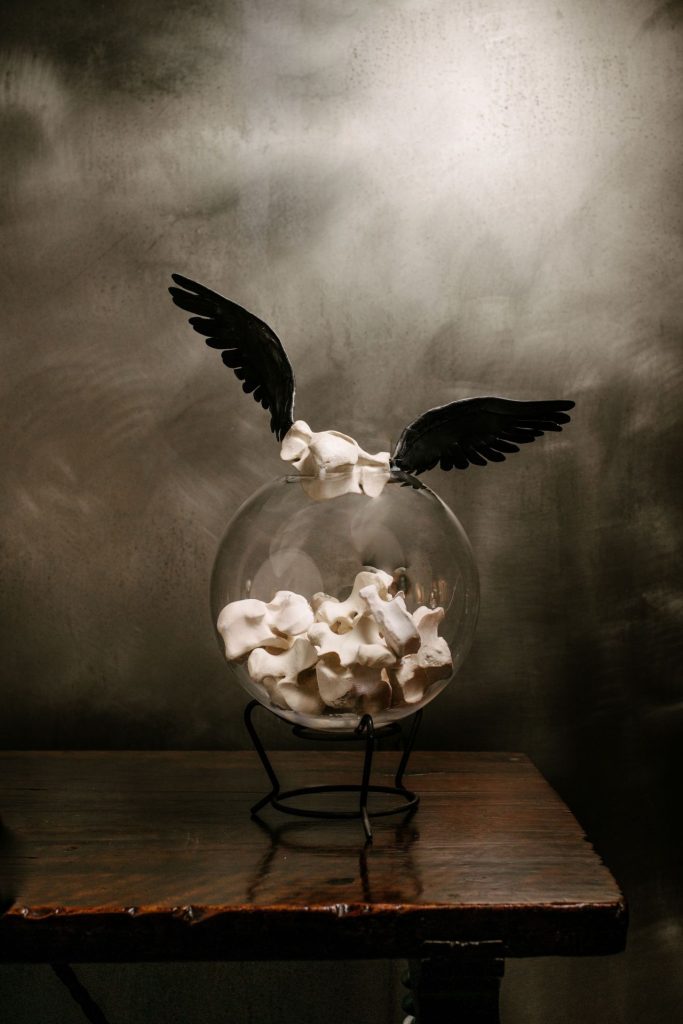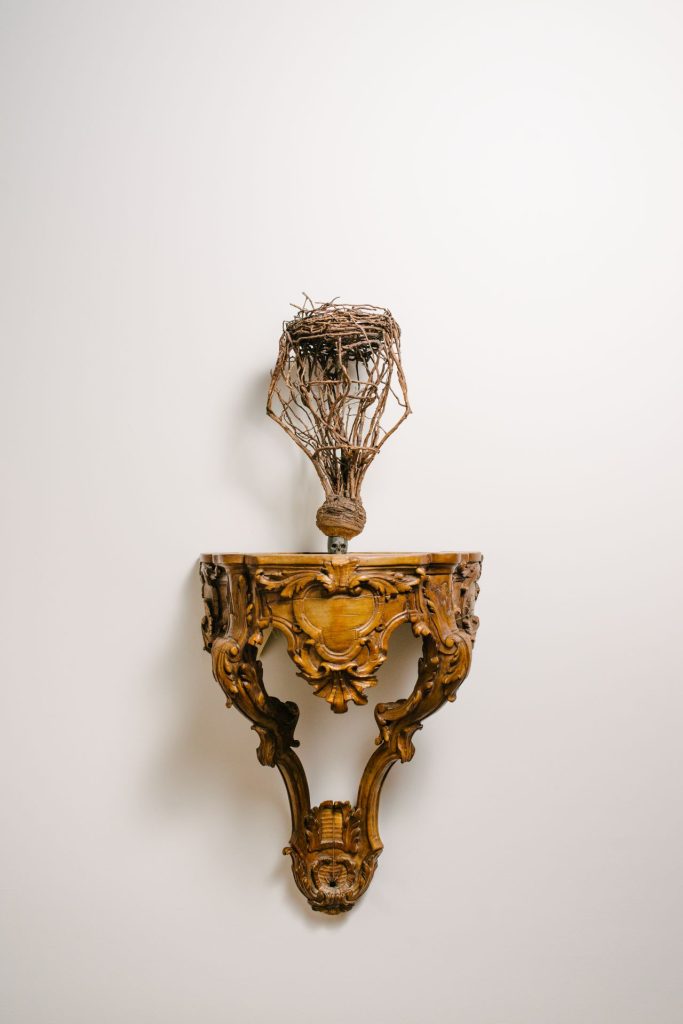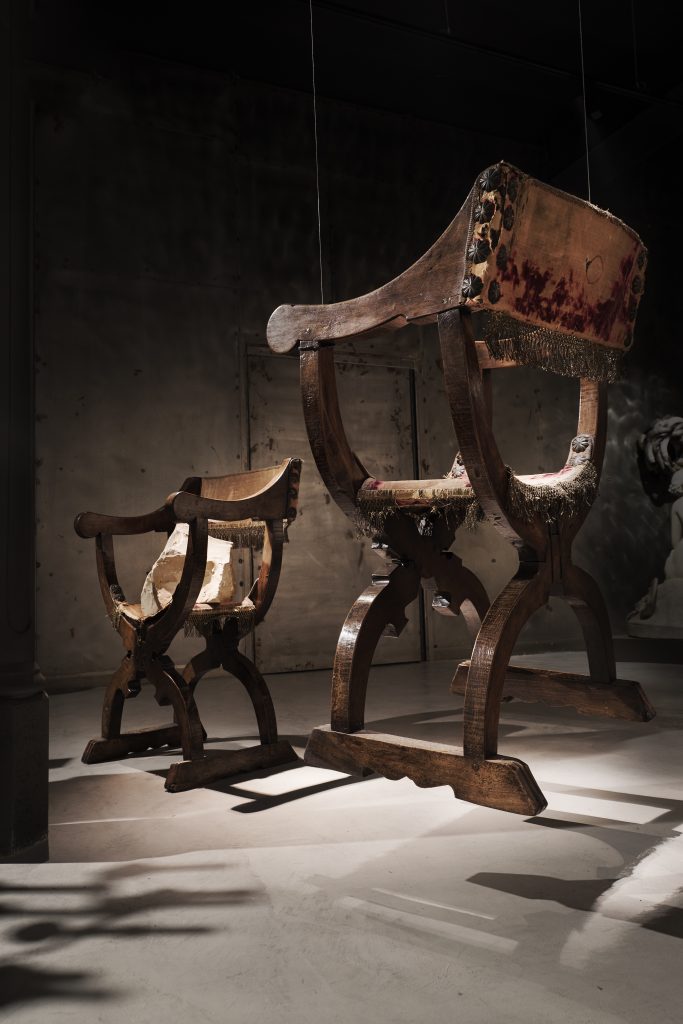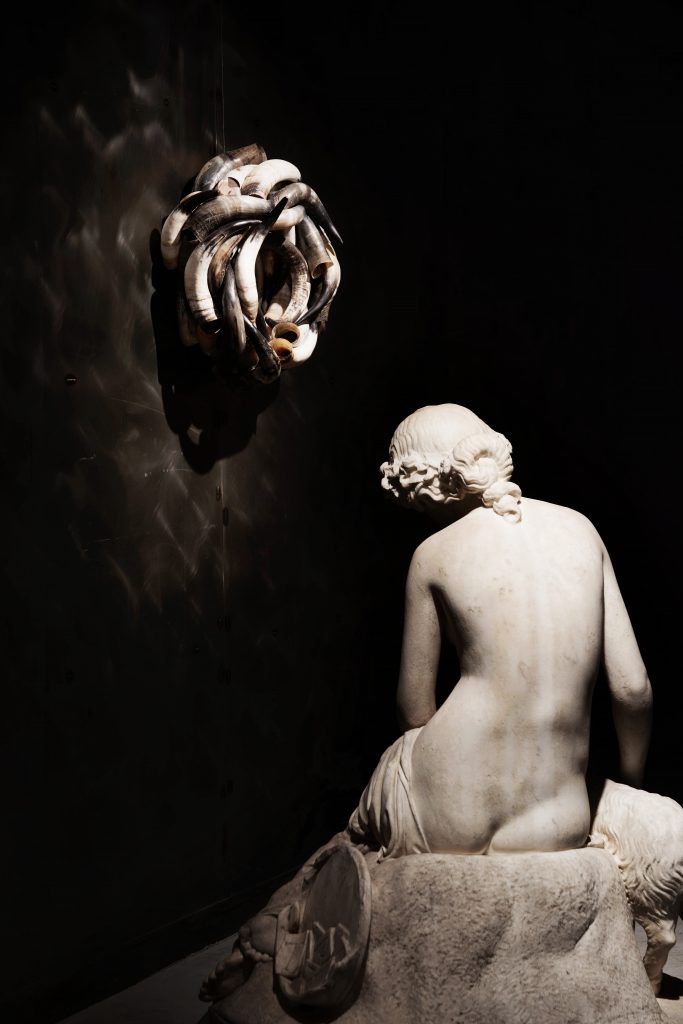There is a world that cannot be perceived by the senses or concepts and that, however, is as real as the visible world; It is an archetypal, intuitive and transindividual world, inhabited by other more subtle energies. I believe that art consists of finding the link between matter and those subtle energies, and imagination is a gateway for it. To trace this apparent energy transfer, we must bear in mind that there are occurrences, unknown universes that occur in a dimension that transcends time and space. Nothing exists separately or disconnected from the rest. The great reality of life encompasses everything without exclusion; free in its movement, but absolutely interdependent.
If we could only for a moment feel that everything and everyone is part of something so vast and complex, we would open many barriers to our ability to interpret the world; it would then be much easier to establish relationships between all things, however crazy they may seem. Then we would feel like fish coming out of the fish tank and discovering the immense ocean.
Art moves in an unlimited field and through unlimited time: past, future, present; everything is within reach. Time is present in the idea of death, impermanence and endless transformation. Likewise, in the idea of genesis, of growth and regeneration, nothing is permanent except for change itself and endless transformation; all solid things vanish into air. Time is also space, and only the union of both can represent a reality. Imaginary Time allows us to see the temporal dimension as if it were spatial, and in it we can move backwards or forwards, to the right or to the left, as if we were moving in space.
Imaginary Time does not refer to the imagination or something invented in the sense of “unreal”. It is a concept derived from quantum mechanics and is used to describe models of the universe in cosmological physics. Models in which there are no limits or time-space singularities (singularities: areas of the universe where the known laws of physics are not applicable). If we visualize “normal” time as a horizontal line, with the past on one side and the future on the other, imaginary time would be perpendicular to this line, like a “vertical” time. Just as in physics, imaginary numbers exist perpendicular to real numbers; it is simply in a different direction from the time we experience on a daily basis.
In this indissoluble space-time scenario, a world made up of diversity manifests itself: every stone, every plant, every animal, and every person are mere forms of a common substance that, agitated by emotion, is capable of transforming into something different. The tangible and sensible world is nothing more than the residual trace of a long progression of ever-increasing degrees of subtle matter. It is the manifestation of the great chain of being. Bergson said that the ultimate reality is only comprehended by intuition.
Everything can be transformed into new forms, we just have to dissolve the compactness that things seem to have; this was easily understood by Ovid in the Metamorphoses.



If we pay enough attention, the force of the present elevates us beyond our own contingency, and any element, however mundane, can be “metamorphosed” into a poetic or ritual object. In this sense, I like to say that my work is like that of a shaman who provides spiritual or poetic food, or like that of an alchemist who plays with vital mysteries. I believe that artistic practice should move energy. In this sense, life is my work cabinet, and I am very aware of how a small gesture can give life to matter and how an emotion can change even a genetic code.
This new Imaginary Time coordinate is very useful when working with these powerful objects that have moved in the history of space-time, without time adhering to them. They continue to exist in the present moment and maintain all their contemporaneity thanks to the excellence with which they were made and preserved. They transfer to this moment the things that appeared and perished before them and, paradoxically, with their apparent “immortality” they transport us to the mortal.



The feeling of transience attracts its opposite, permanence; and to overcome the fragile consistency of the moment, we rescue this idea of eternal return.
Full awareness of the ephemeral is what best speaks to us of eternity.

Pamen Pereira
Since 1986 her work has been presented in national and international galleries such as Palazzo Pinucci and Galleria Via Larga (Florence), Palacio del Senado (Madrid) and Recent Gallery (Sapporo, Japan), and she has exhibited in different museums around the world, such as the Cairo Opera House or the National Museum of Fine Arts in Buenos Aires…
She presents works that move between drawing, painting, sculpture and installation. Her creative process, which generally merges with life experience, is closely linked to nature, from which she draws most of her images. Without abandoning the solitude of the workshop as a place of reflection and study, in recent years her work has focused on installations and site-specific artistic interventions in public and private places, as a challenge in terms of social character of art and the role of the artist in society.